RFID has finally arrived with us, scary, isn't it?))
- let's start with the good news: not at all! Can we end the article here?)
I'll continue for those curious and looking ahead...
But without the unnecessary information that RFID specialists heavily fertilize any description of it, let's go:
1. Technical part.
RFID technology is just a general name for a type of information reception from a tag which consists of:
an antenna, a capacitor, and a CHIP containing the necessary preloaded information.
If we exclude the CHIP from the scheme, in the case of 13.56MHz tags, guess what we get? A regular-looking RF tag. How so? The physics of reading 8.2MHz and 13.56MHz tags is completely similar.
Frequencies and types of RFID tags:
1. 125-134kHz - used only in contact reading method and its range is extremely limited.
2. 13.56MHz - can be used in entry gates as a pass or for reading data from boxes, but no further than 1 meter for quality data reading.
3. 860-928MHz UHF - OUR range in which, at ultra-high frequencies using special antennas, reading up to 3 meters with a stable result is possible.
4. 2.45+5.7GHz - Currently not used mass-market, it's a more specific system for reading tags from an even greater distance for the purpose of tracking movement.
Why was UHF (ultra-high frequency) chosen?
The ratio of system cost/tag cost/reading distance.
1,2 are not suitable due to reasons of low range and poor readability.
Option 4 is prohibitively expensive for retail tag costs, but everything might change someday, just not very soon.
For comparison, AM (acousto-magnetic) and RF (radio frequency) anti-theft protection systems also use tags, but operate at different frequencies.
AM systems use a frequency of about 58 kHz, while RF systems use 8.2 MHz.
These lower frequencies allow AM and RF tags to have a simpler design, as they do not contain a chip with information, but only a resonant circuit.
However, this also limits their reading range compared to RFID tags operating at higher frequencies.
2. Appearance of the tags.
1) Soft sensor-stickers and labels:
Features:
dual-antenna configuration usually 2*5cm, sometimes much smaller, but the length is usually such
combined RFID+RF dual-antenna square 4*4cm
other configurations do not work at this frequency due to the impossibility of energy transfer at this frequency. No spirals with a large number of turns on ultra-high frequencies work, spirals are needed for RF systems and 13.56MHz access systems.
Readers see tags not only in the area that is controlled (entrance/exit) but also see tags much further to the sides.
Software signal analysis methods have the ability to very accurately determine the location of the tag - this works because the tag has 2 antennas and readers tune and calibrate specifically on the tags that are used in this store or network of these stores.
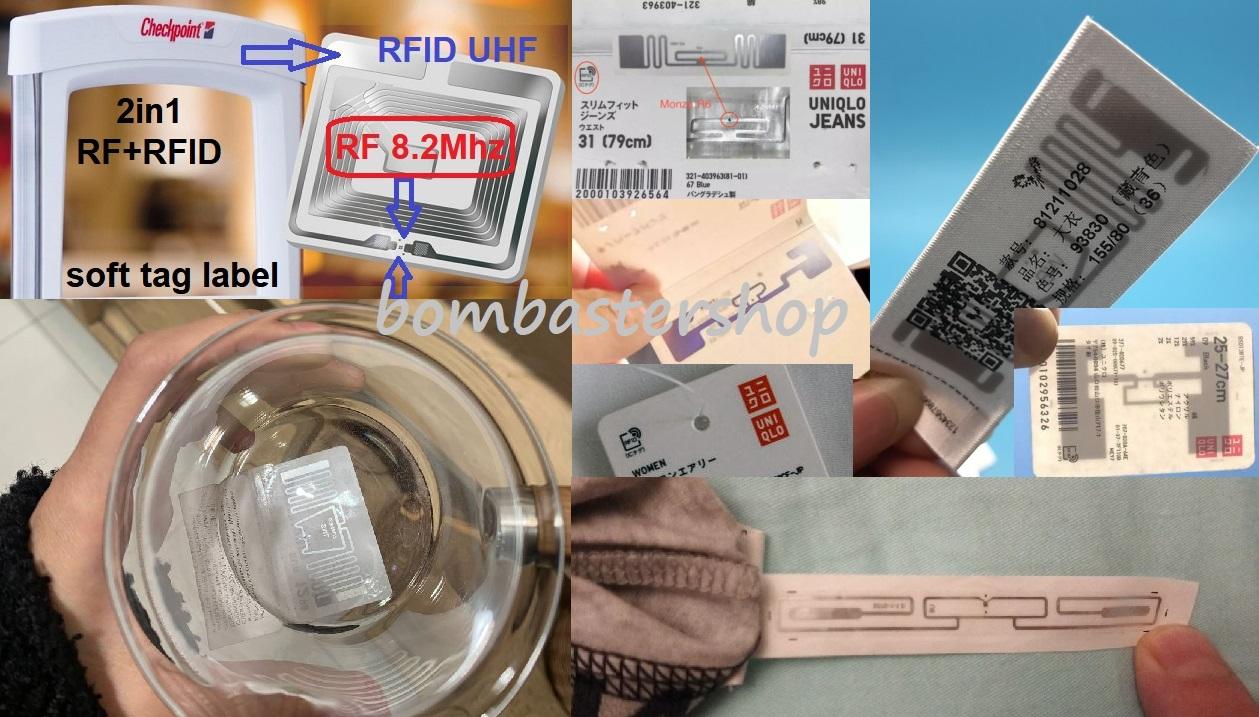
2) Hard sensors with embedded RFID tags:
Features:
- often marked with an RFID inscription;
that's it... meaning in some cases you won't be able to distinguish them from AM or RF visually if you don't know the assortment of such tags, therefore I will post what I have in my database of photos from real clients.
What here needs to be noted:
1. 2-in-1 sensors from Sensormatic, which integrated RFID into their grey supertags before 2010 (AM tag and thin flat contour RFID);
2. 2-in-1 sensors from CheckPoint, which we also see somewhere at the beginning of 2010 (typical RF tag and RFID tag around);
3. Sensors from other manufacturers, which are increasingly ramping up production and filling the still empty niche.
Here's an important point, all hard tags from each manufacturer have... the same tag code, meaning logically they are marked immediately as ANTI-THEFT SENSOR.
Meaning they are not programmable and do not carry any information about the item to which they are attached!
.... The juiciness of this important point is that if you have your own small store and you are tired of all these gates, you can... just install an RFID system, change the sensors and that's it, without a complex software infrastructure tied to information in the sensors. Simply by specifying in the reader setting that such-and-such RFID is a sensor... DONE..
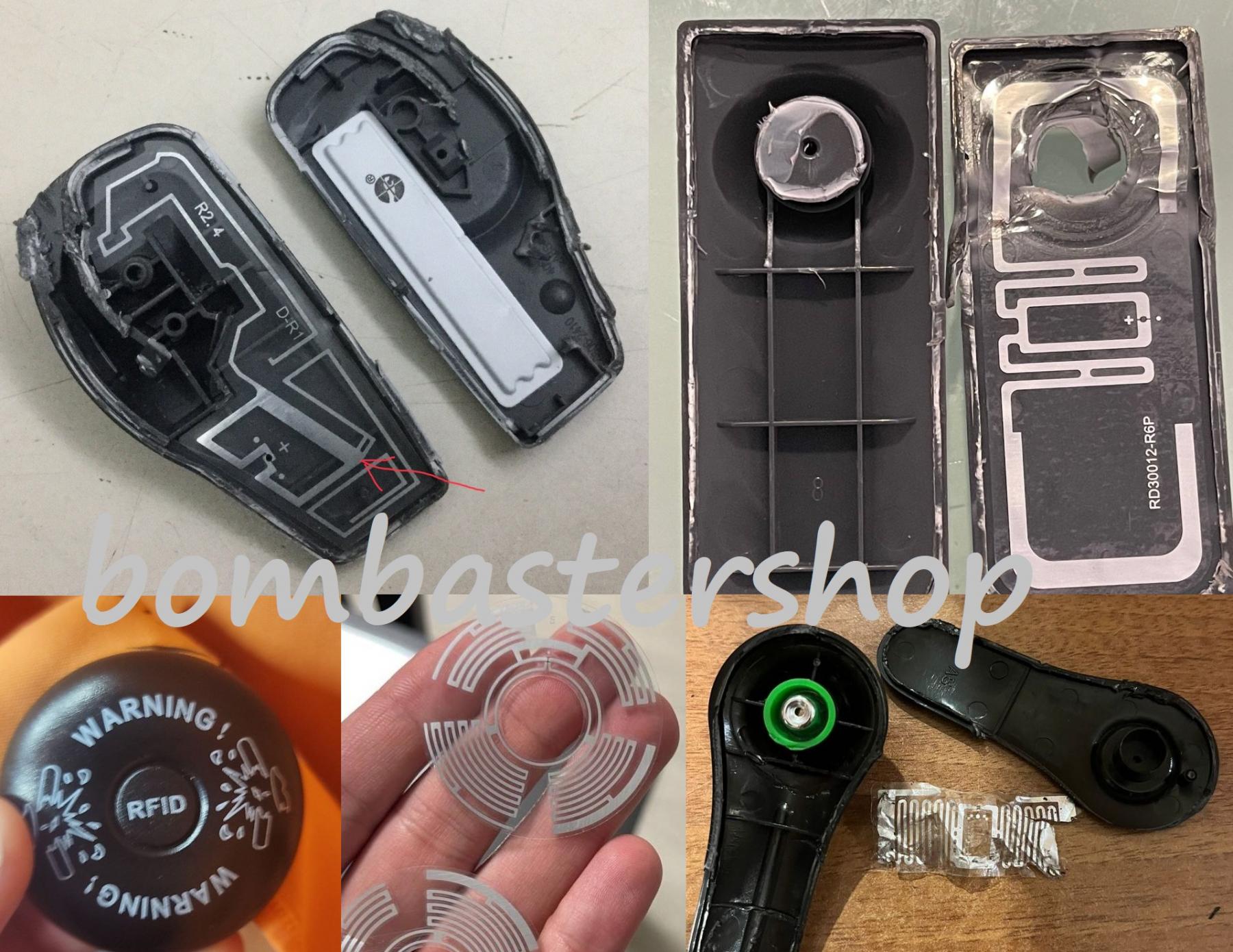
+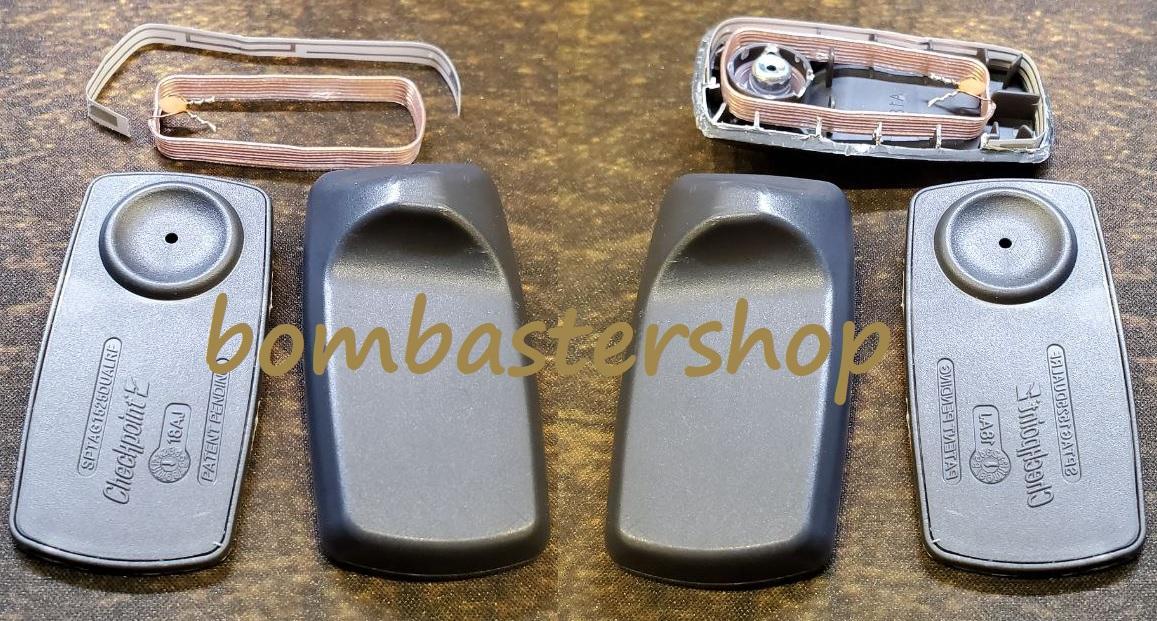
3. The Appearance of RFID Tag Readers.
!!! attention to those with experience... I think you'll easily notice that the design of these readers does differ from manufacturer to manufacturer, just like AM or RF gates !!!
OVERHEAD MODELS:
NEDAP - features rounded shapes, built-in LEDs that look like dots (the thing with two black eyes is a visitor counter, pay it no mind):
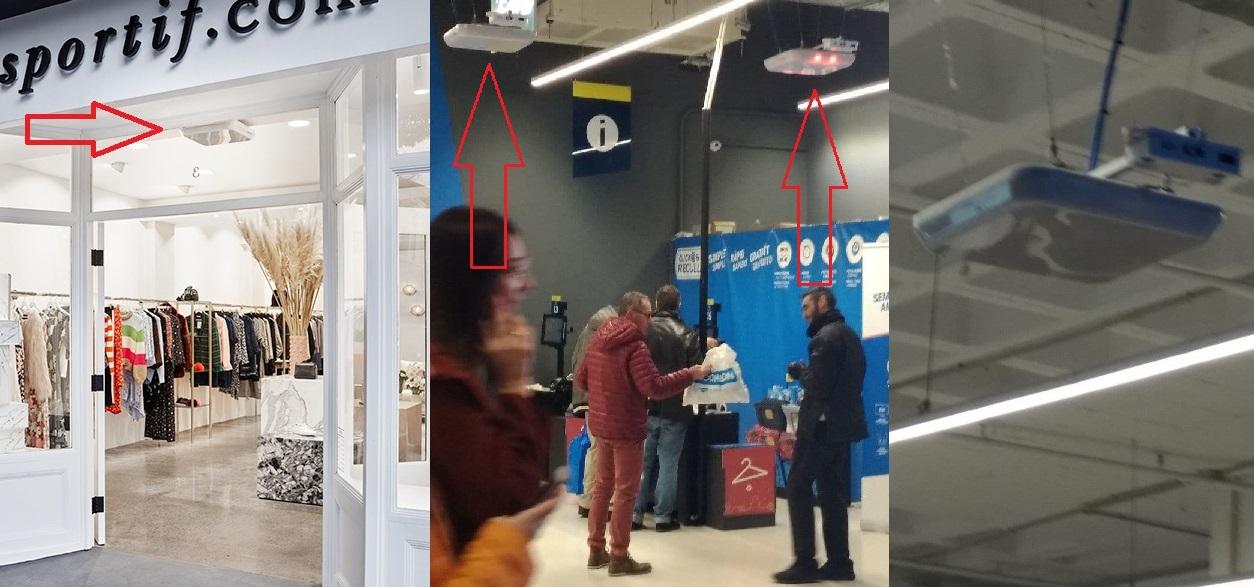

Sensormatic opted for a maximally rectangular design to match the style of the latest AM Synergy gates:
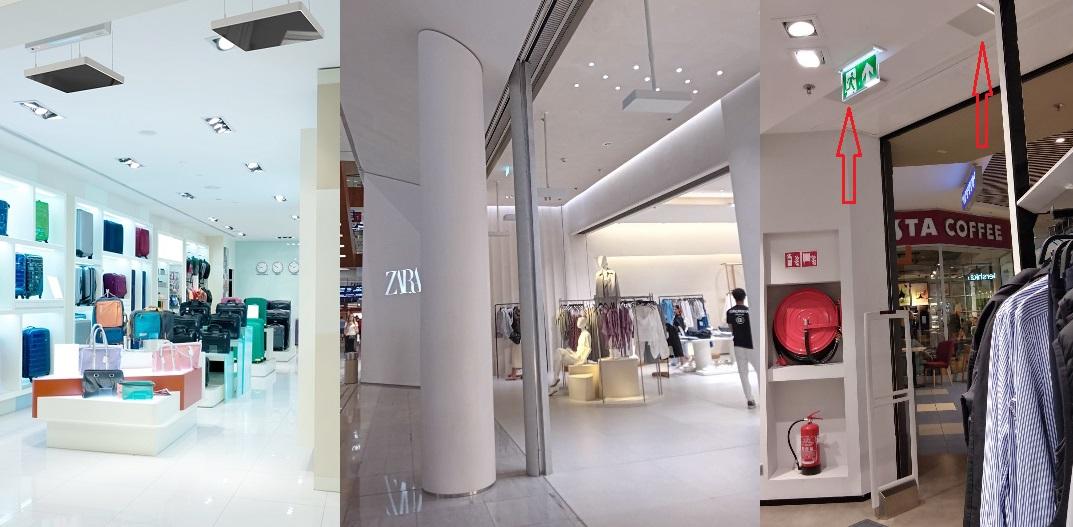
Checkpoint stands out particularly with its two-part main antenna and additional antennas, which cover "visibility" from other angles: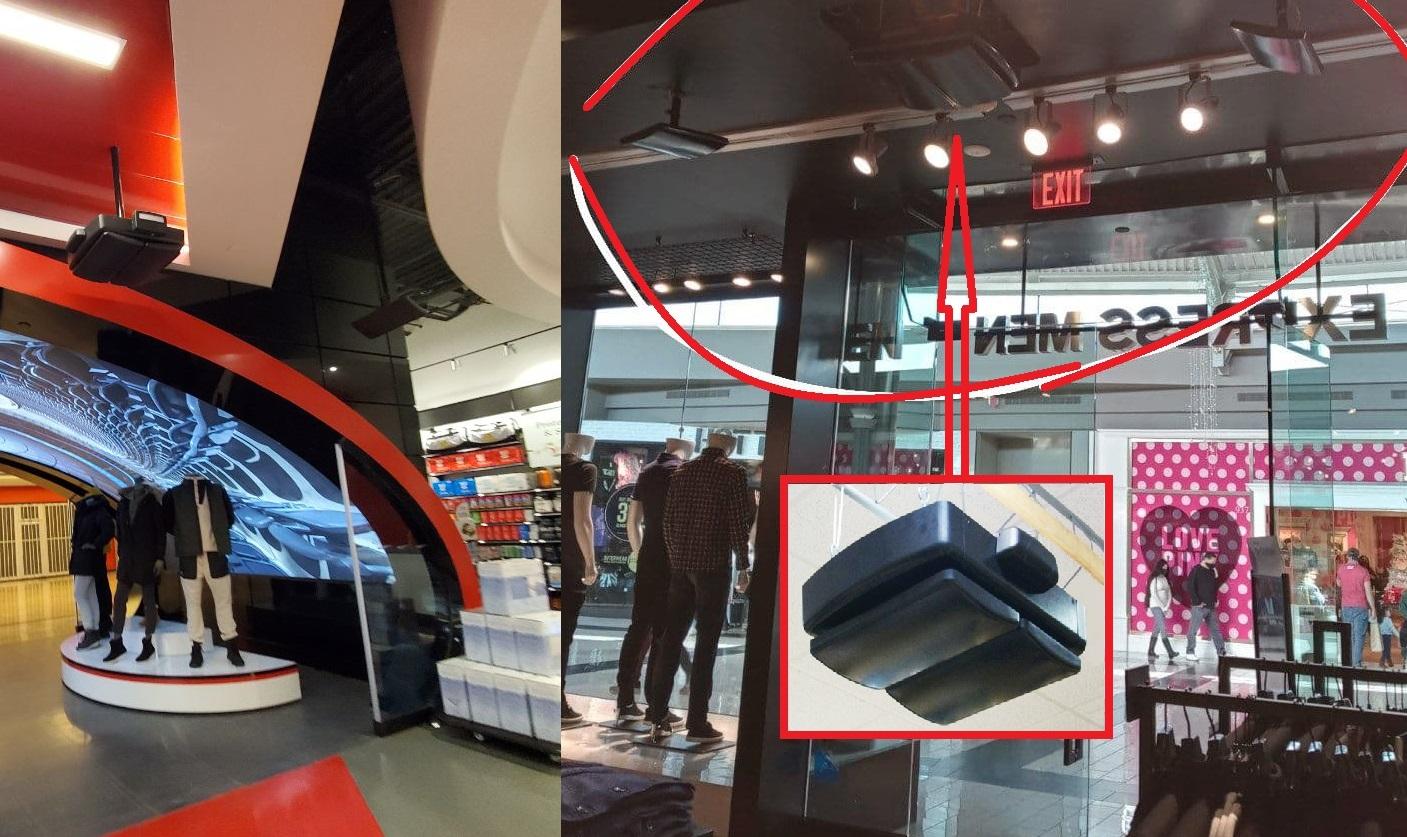
RFID MODULES INTEGRATED INTO GATES:
NEDAP has a separate line of gate models with an RFID module, which looks like an extended part in the middle, the first models were released over 10 years ago, and have evolved in the new series: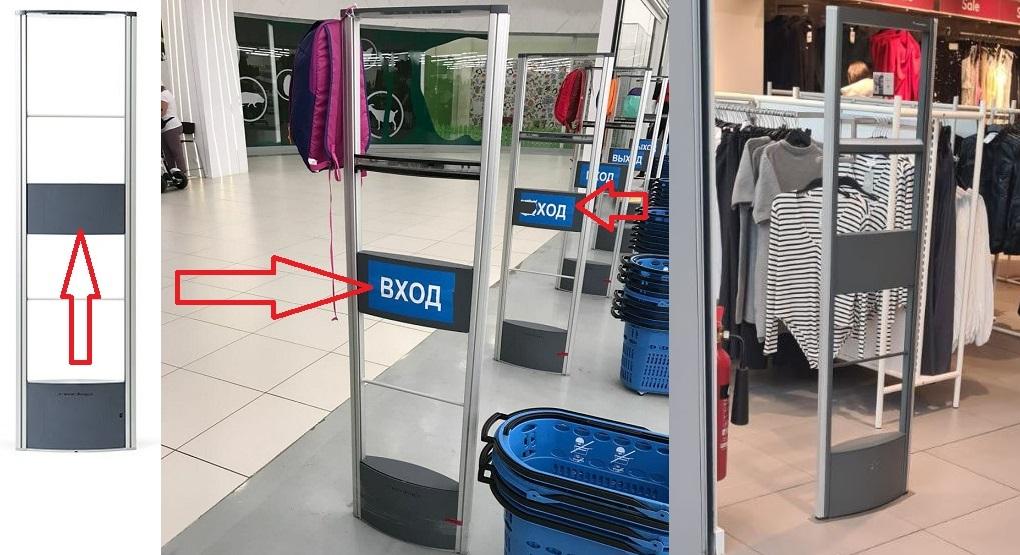
Sensormatic offers additional retrofit modules that are mounted on the panel on the latest model AM gates Synergy, and completely covers the frame area:
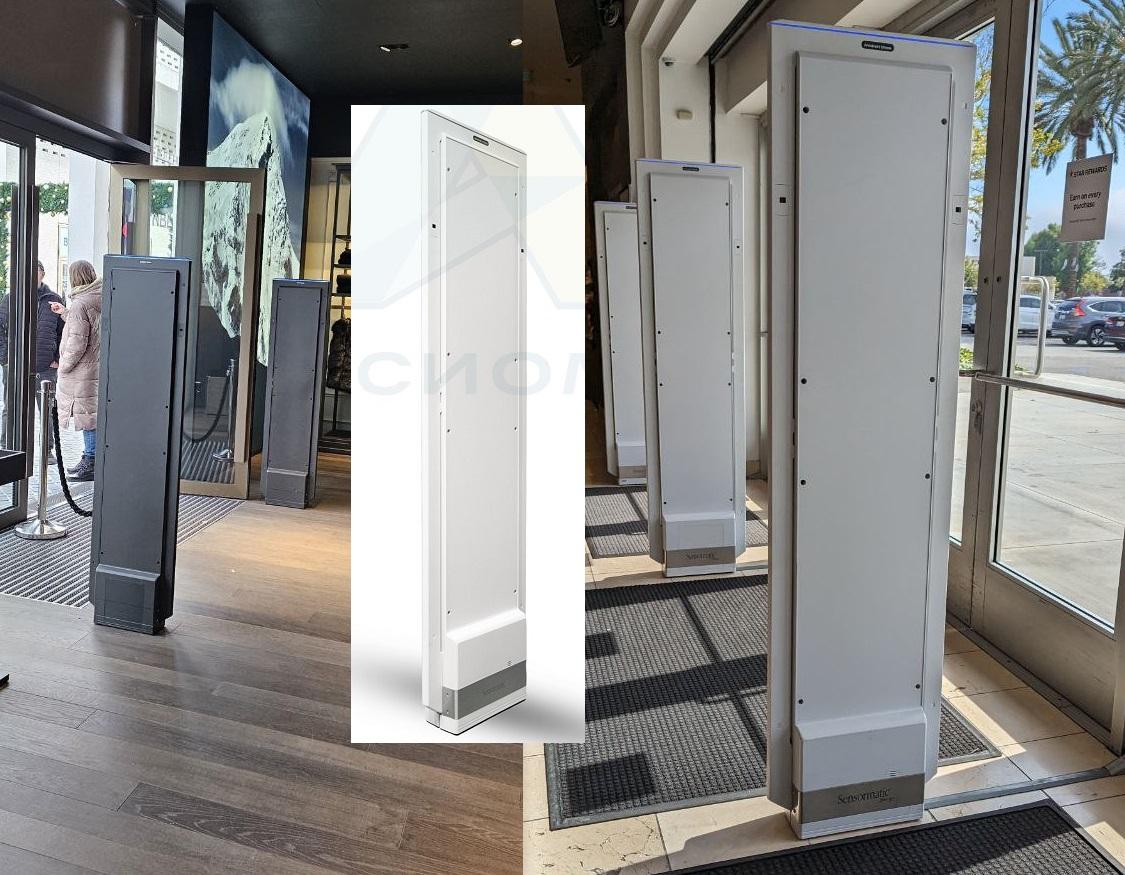
Zara and Inditex is currently supplementing AM systems with RFID panels in many countries, the manufacturer is not known to us, but taking into account compatibility, this is still likely their development: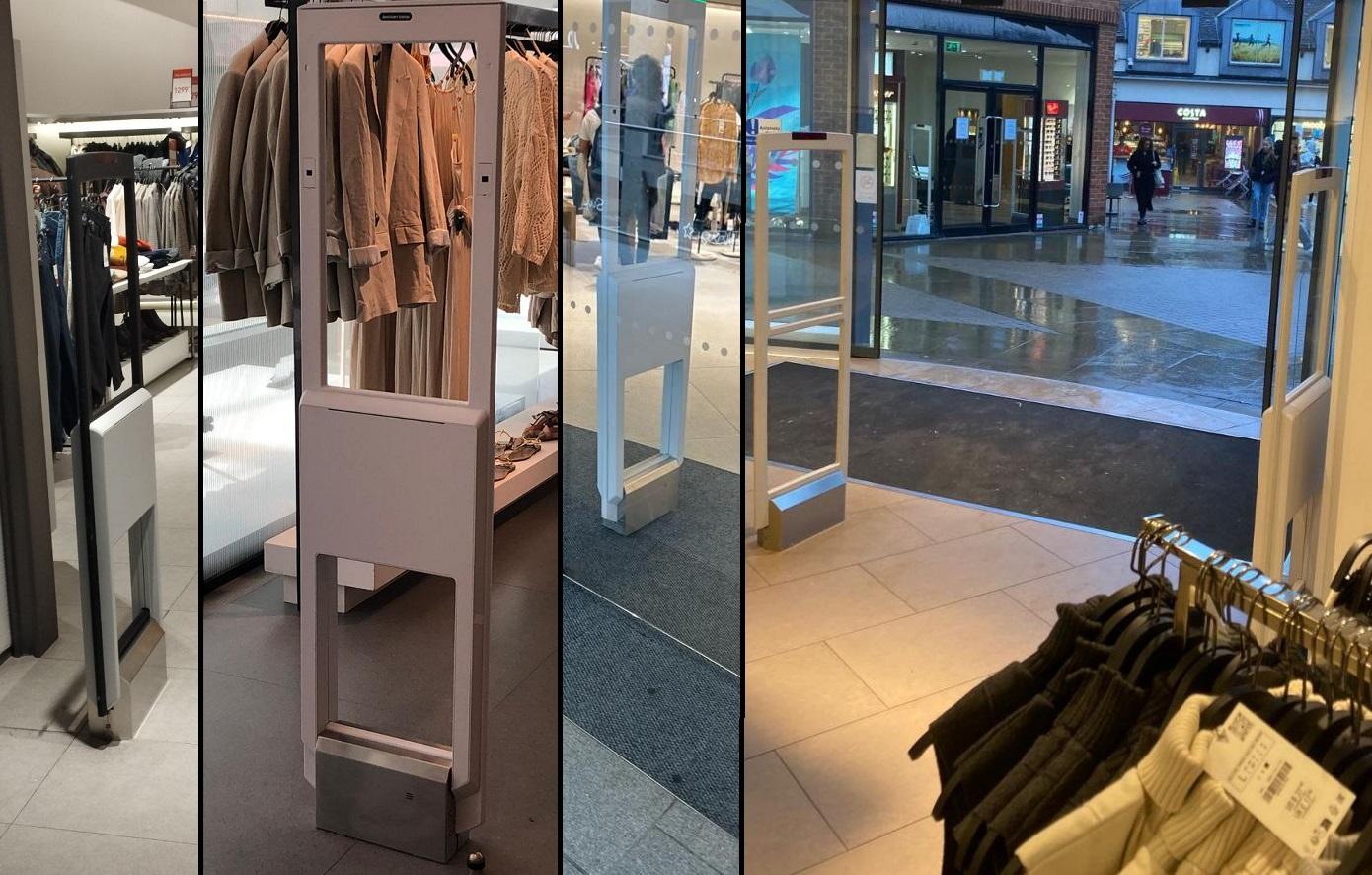
Checkpoint has developed and implemented additional modules to its gates, which are installed directly on or inside the gate frame as in DECHATLON box frames, found in UNIQLO and other places where it's cheaper to upgrade than to change the entire system:
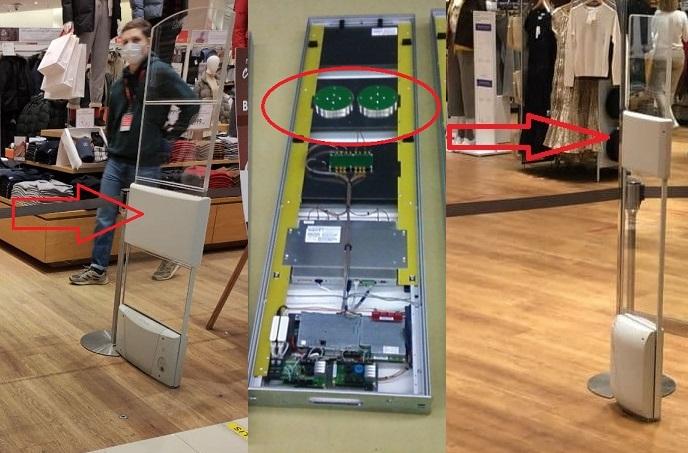
+
The latest innovation from Checkpoint is the SFERO model, a comprehensive system combining 2 powerful readers on the sides and an additional module or multiple modules on top, I'll leave here the promotional video as well:
https://www.youtube.com/watch?v=J_1hOU6cix8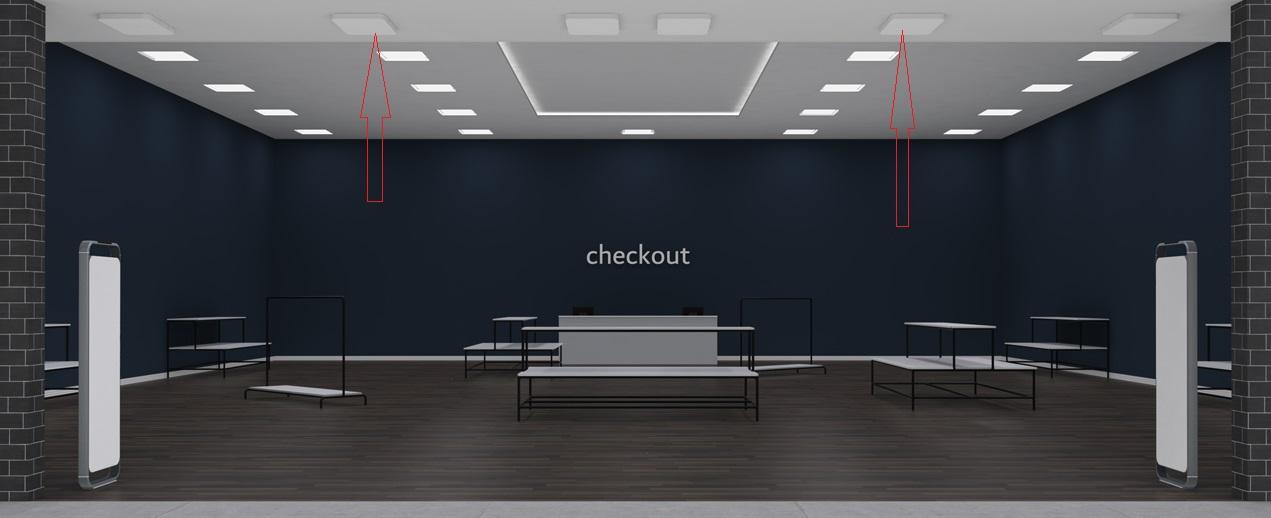
4. Vulnerabilities.
As it turns out from real-world tests, RFID tags are not particularly vulnerable to physical damage. Watch the video below, which clearly shows that you need to isolate the chip from both antennas; otherwise, you're just reducing the reading range, not deactivating the tag.
Questions you might have after watching the video and their answers:
Do you need to cut in two places near the chip?
- Look at the photos of the tags, and you'll see that if you cut the tag in the middle of its length, you'll definitely break the contact between the chip and the antennas.
What if I don't cut all the way through somewhere?
- The reading range will decrease, which will most likely allow you to pass through a system that only has ceiling readers, as their range is indeed smaller.
Why do you show the first cuts not near the chip?
- To demonstrate the tag's resilience to minor damages.
RFID PROBLEMS:
- Like RF, they are unreadable if stuck on metallic objects since the wave cannot penetrate metal, and reading is only possible with direct line of sight and radio-transparent obstacles (i.e., the product it's attached to);
- Vulnerability to physical damage.
That's all...
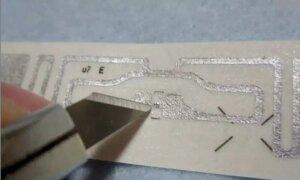 |
Just these two factors alone nullify the chances of a full replacement of all other anti-theft systems.That's what we thought when this article was written, around 2021. But the world changes incredibly fast, and now it's an inevitable reality.
What we can do for you:
1. An RFID tag finder, so you can quickly locate and physically remove or deactivate tags we've created, but haven't had time to launch for sale; we think we'll do this simultaneously with the jammer.
2. An RFID tag deactivator planned for 2024.
3. Our favorite, jammers, and we're already on it (as of 15/02, the first prototype jammer was publicly tested), but we can't give exact release dates, probably early summer 2024.
Initially, the jammer will be sold as a separate product, and later we'll try to combine it with an AM RF jammer, but that's a story for another time.
CHECK OUT THE DEMO OF OUR PROTOTYPE IN ACTION:
AND WHAT ABOUT FOIL??? You can't just put an MD against foil and hurray, back to the past!!!
- no... you can't, AM, RF, and RFID frequencies are in different universes. RFID easily and effectively navigates around obstacles, and you only have one option, which is an iron pot with a lid (or a box), but foil works too if wrapped very tightly.
I tried to write a text about how and why and where, but it turned out to be easier to find an old bag made of the best foil and conduct actual tests, where RFID tags are not at the very bottom of the bag but slightly above, yet below the middle height of the bag! I think there will be no more questions after even a PORTABLE reader can see the tags from 3 meters away from the side of the bag, and top RFID systems will definitely peek inside.
Just see for yourself:
5. Prospects.
Since the article was written in 2021, the entire INDITEX network (Zara, Bershka, etc.) has implemented RFID systems for widespread use, both as ceiling systems and as extensions to the end frames of aisles.
This happened explosively and literally within a few months, I received messages from all over the world about this beginning.
INDITEX had been implementing RFID for a long time in logistics, inventory, and merchandise movement, but it was delayed until the last moment.
Where did INDITEX place the tags?
- Under the sewn-in label (brand tag) usually with the size of the item;
- In the tag where the composition and care recommendations are described;
- And also, RFID tags were implemented in AM sensors SuperTag a long time ago.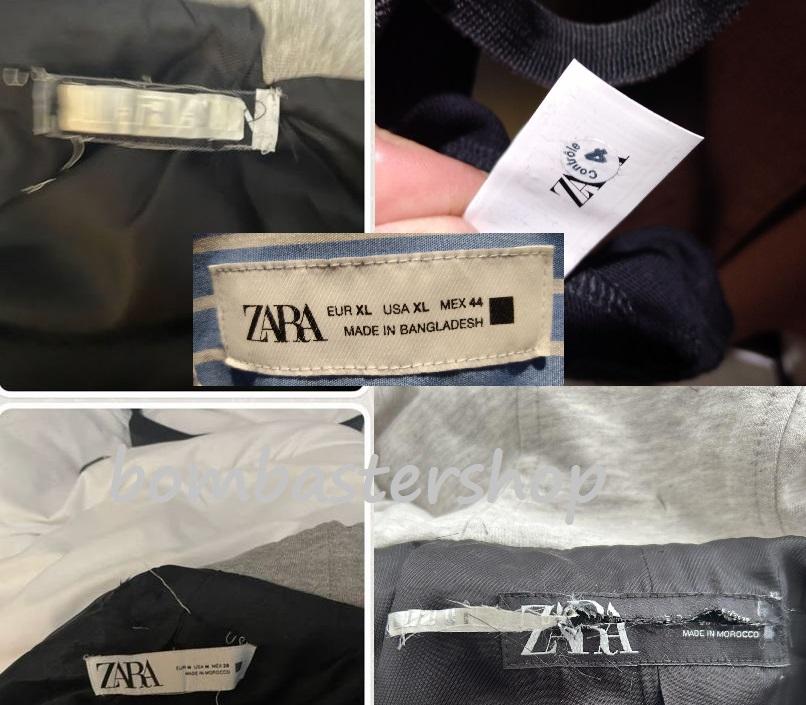
It's worth noting that Checkpoint already 10 years ago posted a video on their YouTube channel about the future, where the entire RFID scheme is visually demonstrated, specifically in terms of anti-theft technologies, see for yourself:
https://www.youtube.com/watch?v=eQYs6rqGY-k
The main problems were the high cost of RFID equipment and the lack of qualified specialists. These specialists must be able to set up systems efficiently and in accordance with certification requirements.
Over time, manufacturers have increased production and, by reducing costs, have lowered prices on many system components, and the Chinese are mass-producing RFID tags, which have also become cheaper.
For these reasons, RFID has appeared on almost all products, I'm sure you've noticed this in the last 5 years, which opens up opportunities for application in anti-theft technologies.
The last to likely join will be food hypermarkets, as it will still be costly (RFID sensors are still more expensive) for them due to the large volume of low-margin mass consumer goods.
What was overlooked?
- RFID isn't just tags and readers... it's very expensive software, additional computing power and its administration, scanners, and inventory management with a complete RFID usage complex from the factory to the hands of a customer leaving the store. Otherwise, all this makes no sense and is not cost-effective. You can learn about the details of commercial offers and motives for implementation on a sufficiently high-quality page:
https://dk-sp.com/o-kompanii/publics/rfid-sistems
Which networks are most likely to start using RFID in the future, completely replacing AM or RF?
- I'm betting on the H&M network as they install only NEDAP gates with an integrated RFID module in all new locations;
- ADIDAS and NIKE are closest to implementation, as they have been tagging a large part of the goods from the factory for quite some time and have warehouse RFID accounting methods;
- some JD sports stores have already implemented RFID in some of their stores;
- Celine, CK, Marco Polo, Etam... well, it doesn't matter anymore, I think by this point you've already understood where to look now.
Here I'll leave a promo clip from ADIDAS about implementing RFID, they also collaborate with NEDAP, which is precisely a European company:
https://www.youtube.com/watch?v=U0-xl3F-Vuc
Small local-scale networks haven't been noticed for such development; they are not involved in implementation or even attempts.
!!! BUT... as soon as the mass-market giants fully switch to RFID, a lot of specialists in implementation and support will be freed up, and anti-theft companies will start to advertise their systems more aggressively to small stores.
I will also note my own observations related to the fact that AM and RF systems have reached the maximum of their technological capabilities and are not developing further, which means "the end" for these technologies and a gradual complete replacement, as they will break down, become obsolete, and so on. And RFID systems also mean global analytics of sales, goods, and PEOPLE movements in space, as an RFID tag from one store is read everywhere by other RFID readers of any manufacturers (without specific data, of course, but if they start sharing with each other and combining data into one database... you could be tracked not only by your phone movements)...
6. How it works through the eyes of a shoplifter and security.
An unsold item with a tag has a chip code for that specific item (essentially a serial number assigned at the factory).
When you approach the reading zone with this item and tag, a notification is sent to the security guard's special smartphone, stating:
- such an item was in the zone of such a reader, then the guard will approach you if he was nearby at that moment and will ask you "caught, huh?)"...
No, first, he will inquire where this specific item is, then he will check you with a handheld reader which has a narrower search zone and will find the tag.
But such handheld readers are STILL very expensive, but soon you will see them more and more often.
However, if the item was at the checkout, the RFID of this item was read and the item went through the receipt, the notification won't come, but everything will be displayed in the smartphone's program and on its screen when you pass through the readers. Therefore, even a purchased item will enter the store's database with the note "left the store".
What can be done with this information?
- a question to your imagination based on these and other data taken from my site, I won't suggest or teach specific actions, you can do everything yourself.